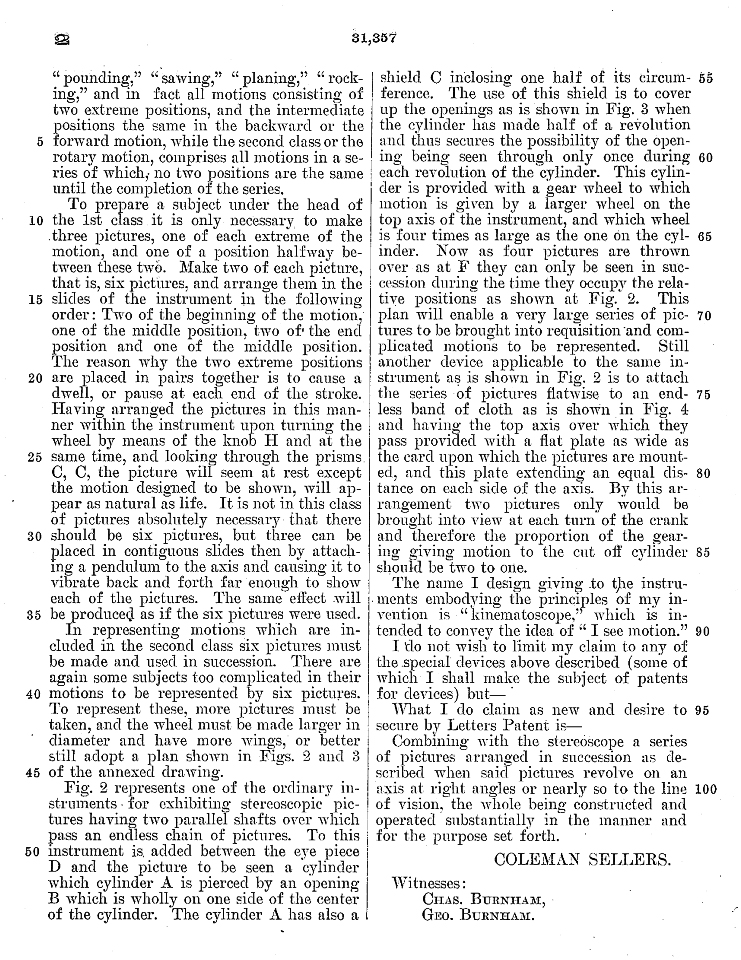Coleman Sellers Biography 1827–1907 Page 5
INVENTIONS AND INTEREST IN PHOTOGRAPHY
The result, however, was quite successful in portraying such simple, repeated movements, as of a boy driving a nail or a lady sewing.The form of the device shown was its simplest shape; but Dr. Sellers also contemplated the use of an endless belt approximating more closely the modern highly developed machine, as will be seen by reference to the below figure, which is a reproduction of his patent drawing. As illustrating the scientific method with which Dr. Sellers usually works out his inventions, it is interesting to quote from his patent application [USA100031357] the following:
“What I aim to accomplish is, to so exhibit stereoscopic pictures as to make them represent objects in motion, such as the revolving wheels of machinery and various motions of the human body, adding to the wonders of that marvellous invention, ‘The Stereoscope,’ a semblance to life that can come only from motion. It is to breathe into the statue-like forms of the stereograph, as it were, the breath of life. * * * It must be done by viewing in succession a series of pictures (taken in different positions of the moving object) with sufficient rapidity to insure the image of one being retained on the retina until the next one is brought into view. This has frequently been done with plain pictures, but has never been done with them in the usual manner of exhibiting such pictures. In the phantasmascope, as it is usually constructed, the pictures are arranged in a circle on a cardboard, and are viewed through holes corresponding in number to the pictures. In these toys the pictures pass before the eye, and are seen for a greater or less time, according to the size of the holes, and it has been found that, unless the holes are very small, a blurring effect is produced.”
“On this plan my first instruments were designed; that is, I arranged a series of stereoscopic pictures around a cylinder and made use of various cut-off devices to produce the instantaneous vision required; but in all cases, though I found the appearance of motion was produced, yet there was a blurring of the image that prevented my seeing the fine detail of the pictures. After a long series of experiments, I made the discovery that it is absolutely necessary that the pictures should be entirely at rest during the moment of vision, or that motion should be in a direction of the line of vision, that is, advancing towards the eye or receding from it, just as you would take a card in both hands and move it rapidly to and from you, in contradistinction to moving it from right to left or up and down.” [continue]




